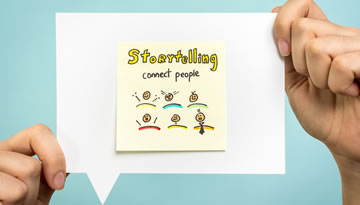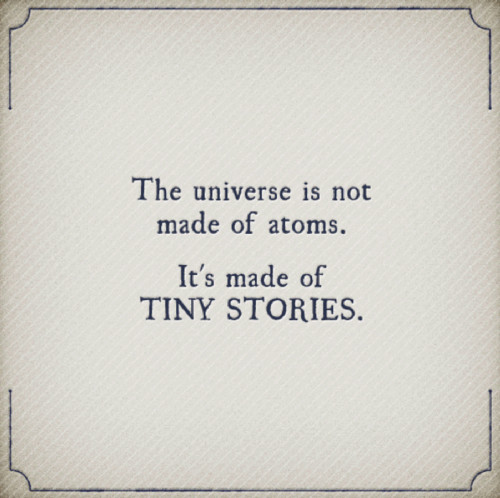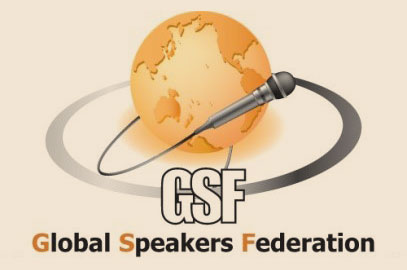Got the Storytelling Bug? Don’t Confuse It with Effective Public Speaking
Guest Post by John White, VenTAJA Marketing
Storytelling. Suddenly, you’ve got the bug.
Maybe you’re streaming the 10 most popular TEDx talks, listening to Ignite presentations or tuning in to The Moth Radio Hour. Maybe you happened into a pub on open-mic storytelling night and you were captivated by the tales people told. Or maybe you saw the post by Suzannah Baum on choosing the right stories for your presentation.
“If they can do that, so can I,” you tell yourself. You’re inspired.
“We need to do more corporate storytelling,” you say to your Sales and Marketing team. “People love stories, and if we get better at telling our story in sales presentations, we’ll sell more. I’m going to start participating in storytelling events to hone my skills in public speaking and selling. And I want all of you to do the same.”
Your co-workers shift nervously in their chairs. Several exchange panicked glances across the table. A couple of them check their phones and mysteriously discover urgent messages they have to go and deal with.
Why aren’t they all on board with participating in storytelling events? What do they know that you don’t know?
They know that popular storytelling is almost completely artificial.
It isn’t that the stories themselves are artificial. It’s that the storytelling situation that’s so popular these days is artificial. Trying to refine your corporate storytelling skills by taking the stage on open-mic night is like learning to drive an automobile by playing Super Mario Kart.
Trying to refine your corporate storytelling skills by taking the stage on open-mic night is like learning to drive an automobile by playing Super Mario Kart. Share on XThere are too many differences in the rules between stand-up storytelling and effective public speaking to rely on the former for skills in corporate storytelling. Here are a few of the main differences:
Your audience
The people in your audience at the café are not going anywhere. They have almost no distractions, except the amount of beer in their glass or the battery level of the device on which they’re playing your podcast. On open-mic storytelling night, they know they’re in for pot luck. They’re not very fussy and most of them are going to applaud no matter what. At least one member of the audience will pat you on the back and tell you what a great job you did. Most of them will even applaud again when you return a month or two later with another story.
Contrast that with the audience you face when making a business presentation to prospects or investors. They’re a lot less tolerant, and even if they maintain a veneer of politeness by keeping their eyes open and nodding the whole time, they can easily check out mentally after your first few minutes and ignore you. They’re known as a tough crowd, in the vernacular of show business.
Your content
Not only can you be blasé about your casual storytelling audience, but you can also get away with dull content. Want to talk about your fifth-grade teacher showing you the importance of using adjectives and adverbs? Want to trot out a few bits of teenage angst for nostalgic value? Most people in the audience will soak it up. As long as you give it some kind of beginning, middle and end, it doesn’t need to interest anybody but you.
Try that with corporate storytelling. (Actually, most people in sales and marketing already do, which doesn’t help their collective reputation.) Talking about features and benefits, or even telling the story about how you decided to put them into your product, usually means that you haven’t bothered to figure out what kind of content your customers and prospects really want to hear. Give them content that matters to them, even if it doesn’t interest you very much.
Give them content that matters to them, even if it doesn’t interest you very much. Share on XWhat’s going on inside your head
When you get the chance to stand up and talk about whatever you want to, your brain switches out of read mode and into write mode. It pulls together details and chronology, it focuses on remembering the bits you told yourself you wanted to remember and it tends to stray now and then, just to keep your mouth from stopping. Even in people who are beside themselves with fear of public speaking, the brain is deep inside itself, generating language. It doesn’t spare many cycles for what’s happening in the audience, unless that guy in the front row is making obnoxious remarks or laughing at the sad parts. Your objective on stage is to tell your entire story, then sit down so the next person can tell her entire story.
Live storytelling in a sales situation isn’t like that. Your brain switches constantly between write mode and read mode as you alternate between telling the story and gauging your listener’s reaction. Your objective is to tell your story until prospects are no longer interested, then figure out the story that will regain their interest — usually, it’s their story — and tell that one until they lose interest again. Letting your write-mode brain blather on as you tell your company’s story is a bad idea, no matter how good a raconteur you consider yourself.
Your relationship with the audience
The most important difference in the rules lies in your relationship to the audience. When you’re storytelling to a mostly passive, casual audience and describing what you want to describe, it can be all about you instead of being about them. You don’t need to give them what they want or even wonder what they want. The relationship is woefully out of balance and completely artificial.
That artificial relationship is the main reason that stand-up storytelling is such an inadequate model for speeches and presentations. Effective storytelling is an ongoing struggle to get people to listen instead of merely hearing. You do that by continually tailoring your story to non-verbal cues: yawning, wandering eyes, a glazed-over expression on the face. On open-mic night you can blow that off, but when you’re trying to tell a story about your organization that your audience will remember, you’d better tell it the way they like to be told to. That relationship requires much more work as you figure out the angle that leads to dialogue, not just monologue.
So, what are storytelling events good for?

- People whose palms perspire at the mere thought of public speaking
- People who want to get stuff off their chest
- Public radio Storytelling
- Live action storytelling
- Slide deck enthusiasts
- Purists
- Baristas and bartenders
But it’s still not very clear what’s in it for the people in the audience, except that once the current storyteller is finished, they get their turn at the microphone.
Don’t build your business presentations and speeches around your storytelling talent. You’ll annoy your prospects and customers.
Don’t build your business presentations and speeches around your storytelling talent. You’ll annoy your prospects and customers. Share on X###
John White writes about technology for venTAJA Marketing. It’s dirty work, but somebody has to do it. He made a go of open-mic storytelling and reading for a couple of years but has since discovered other vehicles for beer, like playing softball.





